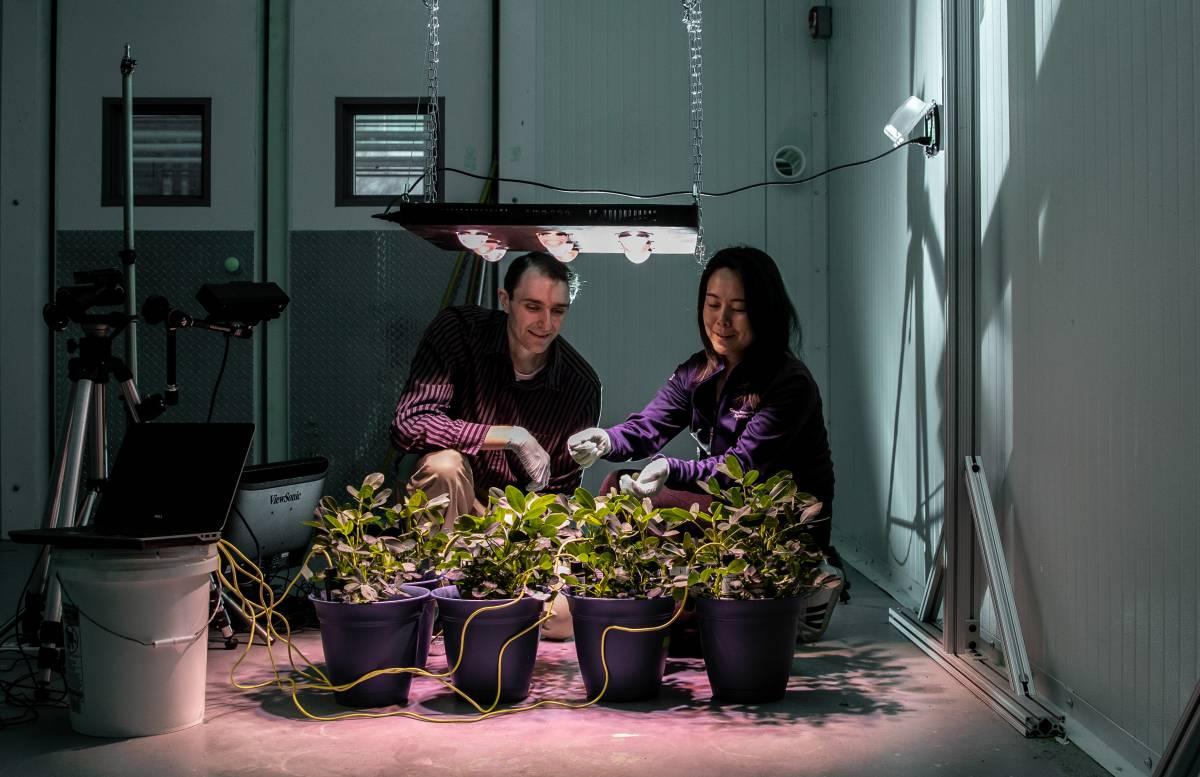Tech alumni and engineers create innovations for the state’s $2.2 billion industry
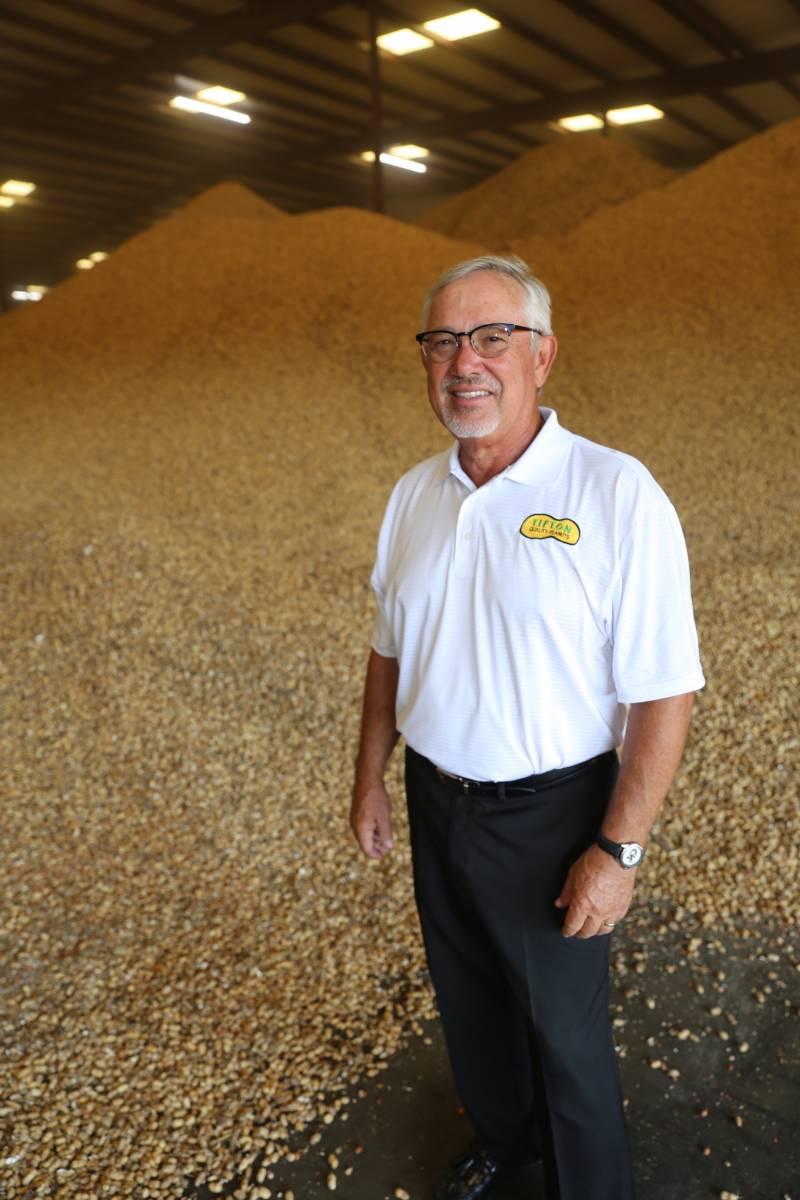
The next time you grab an afternoon pick-me-up candy bar, a protein shake packed with peanut butter powder, or even a classic PB&J, chances are that you’re helping one of Georgia’s biggest sectors thrive.
The state produces about half of the United States’ peanuts, roughly 2 million tons each year, making Georgia the biggest peanut producer in the U.S. Peanuts have been growing in Georgia’s soil since before the Civil War, and as farming technology has evolved, many researchers, students and alumni at Tech have contributed to innovation that increases yield, streamlines the production process and improves the bottom line. And some of them are even peanut farmers themselves, growing and producing the quality product that gives the state its reputation.
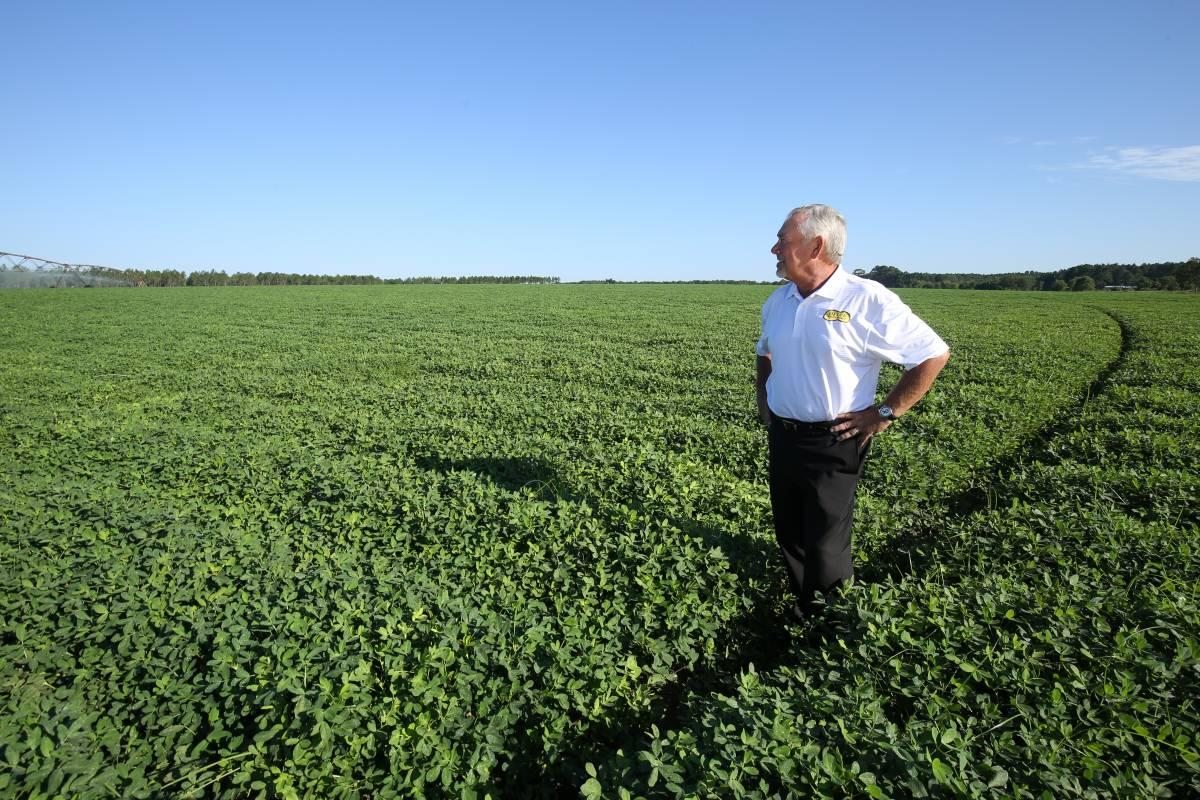
He’s a Helluva Farmer
Originally from quaint Waycross, Georgia, Bill Park (electrical engineering, ’76) spent his summers cropping tobacco on and around his grandparents’ farm. After working as an engineer for more than 25 years, Park became the president and CEO of Tifton Quality Peanuts in 2006. These days, he uses his farming background, as well as his business acumen, to run the successful peanut company.
“Tifton Quality Peanuts was just starting up at the time, and they were looking for someone to help them solidify their business,” recalls Park. “At my previous job, I did a lot of project planning and business case analysis that has proven to be invaluable. Now I’m lucky to have a really great team so I can make sure we have the right people with the right skills in the right place.”
Tifton Quality Peanuts is owned by 140 growers around South Georgia who own stock in the company. For every unit of stock a grower owns, they’re obligated to bring in a ton of peanuts annually, which equals between 100,000 and 110,000 tons of raw material that generates about 150 million pounds of product.
The basic supply chain for Tifton sees farmers bringing their harvested peanuts into one of seven buying points located throughout the state. There, they are dried and cleaned, as well as graded by the Georgia Federal-State Inspection Service to ensure uniformity and quality. The peanuts then make their way to the company’s shelling plant, located in Tifton, Georgia, where they are separated from their hulls with many of those sent to their blanching facility where the skin is removed before being sent off to various food manufacturers. Tifton Quality Peanuts’ customers include manufacturers from well-known brands like Hershey’s, Smucker’s, and Planters, to store brands.
“We’re only a 5 percent player in the peanut market,” says Park. “Because we’re smaller, we have to stay at the top of the curve, and one of the ways you do that is to keep up with what’s new and leverage technology the best that you can.”
Over the last couple of years, Tifton has automated their bagging system, so now fewer employees are handling 2,200-lb tote bags filled with product. And, like the research being done at ATRP, they have also upgraded their color sorting equipment for removing damage and foreign material from peanuts as well as using infrared technology specifically designed to remove foreign materials. The company along with the industry is working to increase the demand for peanuts domestically and overseas, and hence increase the need for more peanut production (and jobs) across the state.“Our farmers understand sustainability and the necessity to improve efficiencies and production methods to produce higher quality and yields at lower costs,” said Park. “Most of that is achieved through technology developments and taking advantage of new seed varieties that also offer drought and disease resistance.”
Park indicates Tifton is essentially a zero-waste facility, marketing edible and nonedible peanut production, as well as the hulls and skins removed in processing. The company is also considering bringing the oil manufacturing and pelletizing processes in house, as well as working to increase the demand for peanuts overseas, and hence increase the need for more peanut production (and jobs) across the state.

The Diversification of the Peanut Industry
Don Koehler, executive director of the Georgia Peanut Commission for the past 33 years, knows better than most how the innovations created at Georgia Tech have impacted the peanut industry.
“When I started three decades ago, peanut growers were working with two-row combines and diggers and a 14-foot wagon for harvesting,” recalls Koehler. “Now we’re talking 12-row pickers, 8-row diggers, and semi trucks for hauling. We’re producing twice what we used to — mainly due to breeding technology.”
The Agricultural Technology Research Program (ATRP) at Tech develops some of these innovative solutions for the state’s food processing industry that Koehler has seen come into play. ATRP works collaboratively with university and industry partners on projects involving robotics, advanced sensors, environmental treatment, and worker and food safety technologies to enhance the productivity of Georgia’s agribusiness.
“Our goal is to transition the technologies we create from concept to commercialization as quickly and economically as possible,” says Doug Britton, program manager and senior research engineer at ATRP.
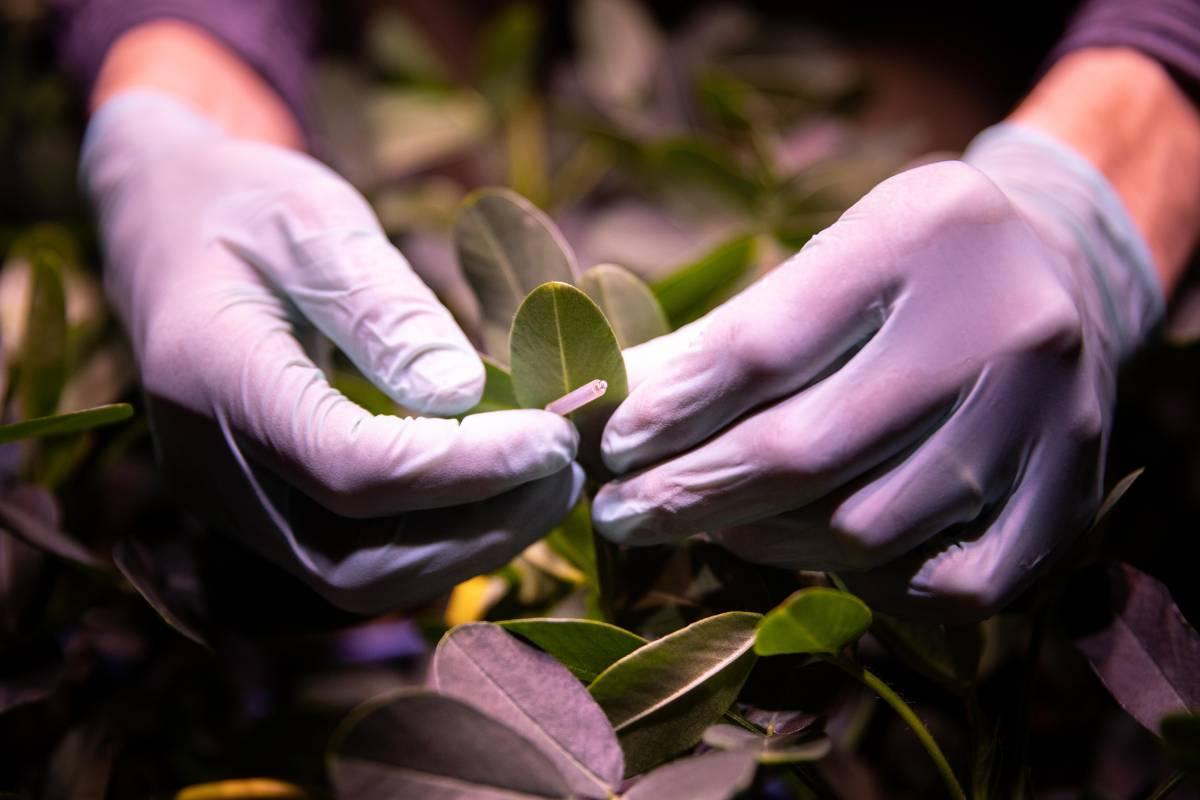
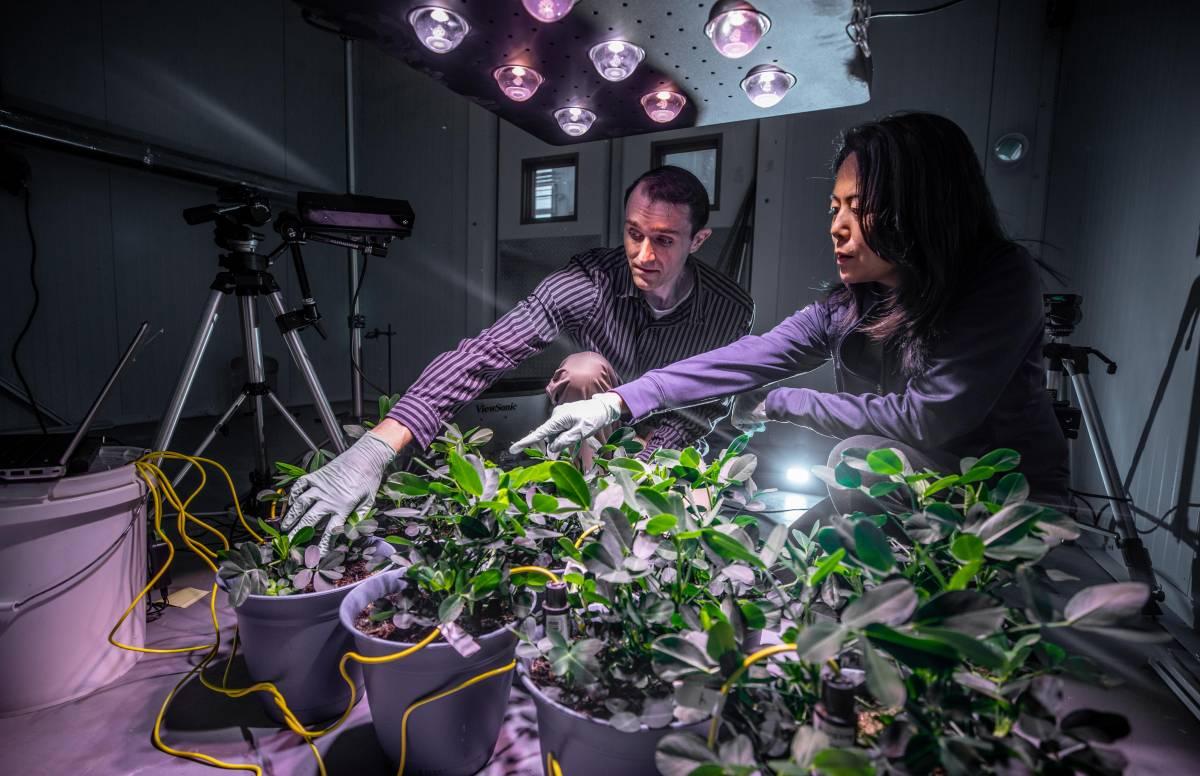
While much of the work at ATRP is on the poultry industry, they are looking at several innovations for the peanut industry with support from the Southeastern Peanut Research Initiative and other national organizations.
“Through our partnership, we have peanut physiologists studying the effect of different kinds of stresses on peanut plants,” explains Britton. “By examining the volatile organic compounds (VOCs) they emit — basically what the plants ‘breathe’ out — we want to see if the crops can give us an early alert about water stress, pest damage, nutrition challenges and more. With this technology, we could fix small issues before they take down a farmer’s entire crop.”
Koehler sees a big benefit to this work with VOCs: While the technology is mainly a diagnostic tool at the moment, he sees the potential in the future for it to help farmers know exactly the right moment to harvest their crop for the ultimate yield.
“Now, growers have to go into the field, pluck a few pods, and examine the internal color to see how mature the crop is — it’s time-consuming and a lot of work,” Koehler says.
“With the kinds of sensors being developed at Georgia Tech, they could feasibly alert a farmer when the plants are a week out from perfect harvest time — and it would likely be more accurate, too.”
The ATRP is also looking at the peanut buying point — the supply chain stage at which farmers bring their products in to have them graded and assessed. Through the regulations set forth by the Georgia Federal-State Inspection Service, peanut production companies have human graders in the buying point room who measure quality aspects — such as rot, mold and decay (RMD); size; and the presence of aflatoxins or foreign materials — to help classify the peanuts into the appropriate grade.
“Because having people in charge of this process naturally makes it subjective, we’re partnering with industrial processing machinery manufacturer Lewis M. Carter, the USDA’s Agricultural Research Service, and others to discover how we can automate this stage through image processing, moisture sensors, automated cleaners, and more,” says Britton.
When Agriculture Meets Technology
For Koehler, the interdisciplinary nature of science and engineering at Georgia Tech is a huge benefit to the peanut industry as a whole. Rather than only employing agricultural engineers as they might have in the past, peanut growers profit from the input of thinkers and innovators with backgrounds in electrical, industrial, environmental, manufacturing and more.
“I’m very proud of the way we have embraced technology programs with Doug at the ATRP and all throughout Georgia Tech, and a lot of it had to do with the state’s Commissioner of Agriculture, Gary W. Black. He wanted the peanut industry to get out of the rut we were in and discover engineers with different areas of expertise who could offer something to agriculture, from smartphone apps to building more efficient equipment.”
By continuing to partner with Georgia Tech, Koehler hopes to capitalize on the expertise of the innovators on campus to explore new avenues for advancement in the industry.
“One of the biggest things for the peanut industry is that we need more and more investment in engineering technology,” says Koehler. “Farmers today want to be able to process their own product and add their own value to the marketplace by producing new products and selling directly to the consumer — like flavored oils or peanut flour — and we want to have the ability to get them there. The microbrewery industry did it, so there’s no reason the peanut industry can’t do it, too.”
